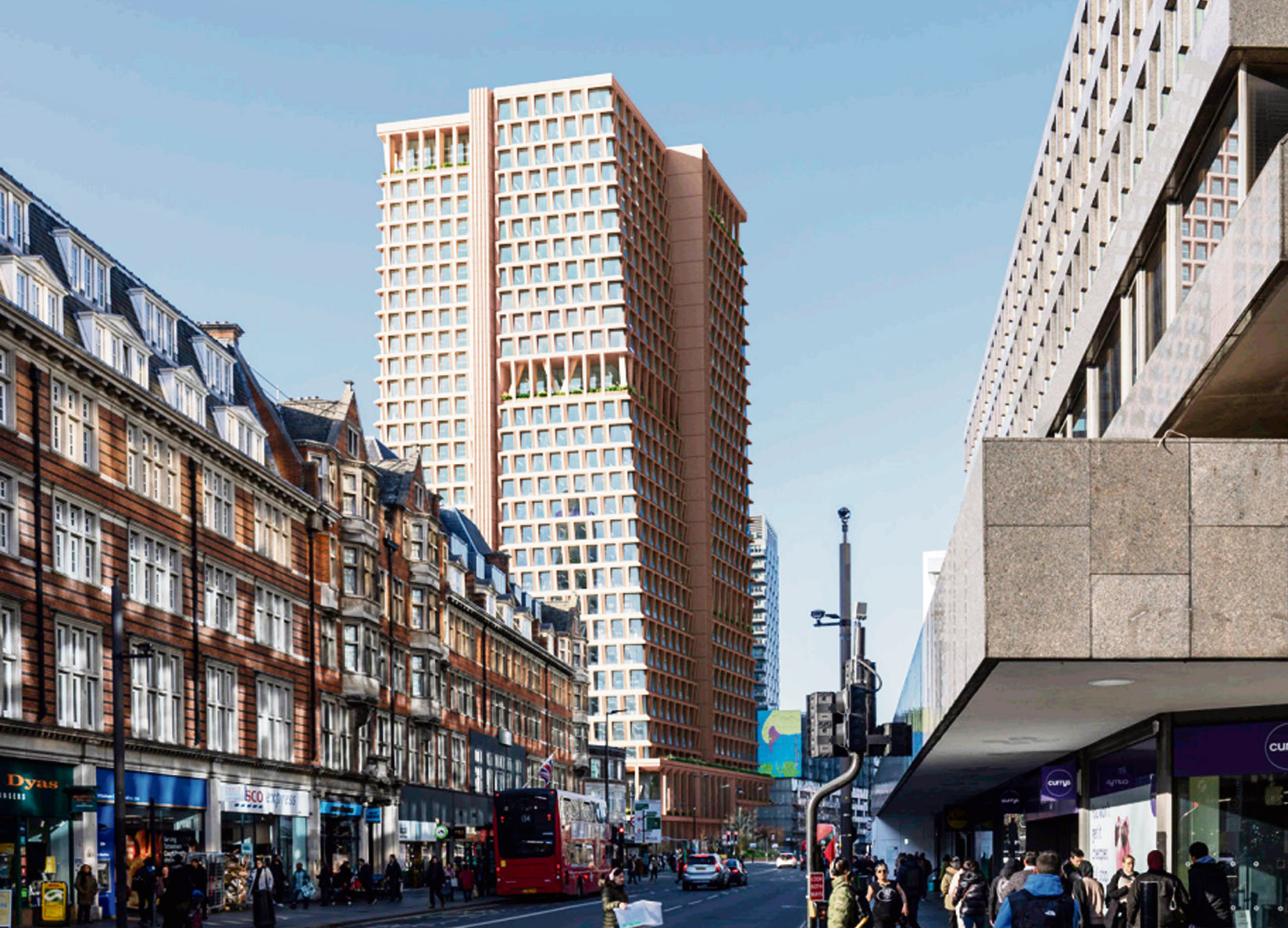The proposed Euston Towers plan is a greedy development
Thursday, 2nd May

Impression of the proposed Euston Tower
• TIM Downes’ letter (Euston Tower will be blueprint for sustainable buildings, April 25), in response to ours highlighting the environmental impacts of the redevelopment of Euston Tower, exposes the weakness of the claim by British Land to be a “low-carbon” developer.
British Land attempts to use arguments for the development of the circular economy – which is urgently needed – to greenwash its intention to continue “business as usual”.
The fact remains this is a greedy development which increases the overall floor area by 40 per cent, the construction of which results in a large amount of greenhouse gas emissions (55,000 tonnes carbon dioxide equivalent).
Tim Downes seeks to frame the project as “retrofit”, but it is a new building and is labelled such on Camden’s planning website.
The structural footprint of the building is nearly doubled, with a massive 1.5m thick concrete raft supported by many new piles. If British Land retained the existing building volume the ecological impact of the new building would be significantly reduced.
The refurbishment option presented in the feasibility study would result in less than half the amount of greenhouse gas emissions (23,300 tonnes CO2e).
Tim Downes claims that retaining 31 per cent of the existing building’s structure is a benefit, but it is not nearly adequate; this figure needs to be much larger, in the region of 80 to 90 per cent.
The Circular Economy Statement required by the GLA is an opportunity to list the ways materials resulting from demolition can be reused. But 90 per cent of the material resulting from the demolition of Euston Tower would be reinforced concrete, most of which can only be reused if it is crushed down to form aggregate. This process uses high levels of energy, which adds to the already large amount of harmful greenhouse gases released into the atmosphere.
The emissions that will be caused by the demolition and processing of the existing concrete is not accounted for in the “Whole Life Carbon” assessment. It should be, but the boxes to be filled in are just left blank.
When it comes to the emissions caused by heating and powering the proposed building, the GLA says that this not nearly good enough: it is estimated to achieve a 14 per cent reduction in greenhouse gas emissions compared to 2021 building regulations, whereas it is meant to be at least 35 per cent.
This is going to mean that the developer will have to resort to using carbon offsetting to achieve the required performance, which has been shown to be a very ineffective way to reduce carbon emissions.
It has to be questioned, therefore, whether demolition of the existing building is a sensible way forward.
The feasibility options referred to by Tim Downes looked at a number of options including residential. Unfortunately the developer has spent a lot of money on work designed to prove that retrofit does not work. Because “optimum” office accommodation cannot be achieved with retrofit, refurbishment is ruled out.
In fact the only type of use that the existing building cannot support is laboratory use, which is what the developer wants to provide. So-called “lab-supported office” is an inappropriate use for the existing building, but British Land’s logic is that it is the building that has to go.
There has already been a number of planning permissions granted for this building type resulting in demolition of useable buildings, for example, the British Library Centre for Conservation and Belgrove House.
This type of building should go elsewhere. We have to find ways of working with what we have inherited, the construction of which has already caused a great deal of ecological harms, not compound it with more unnecessary construction.
CLIMATE EMERGENCY CAMDEN